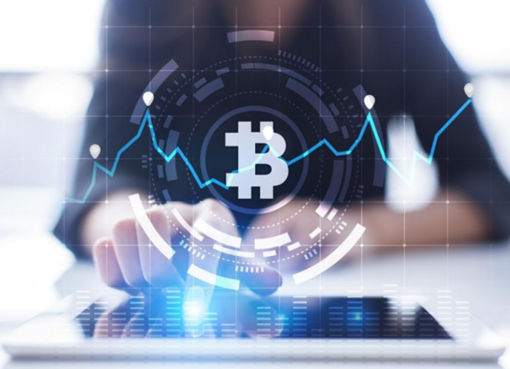Healthcare data sharing and the global information infrastructure are long overdue for an overhaul. There is much to be said about rising healthcare costs, inefficiencies and events such as the Covid-19 pandemic response, but there is little to be said about the systems underpinning this massive US$10 trillion industry. Even more important than our rising drug prices is medical malpractice. Medical errors have become the third leading cause of death in America. Many of these errors can be traced back to gaps in the patient record that lead to improper treatment.
Three main issues plague the industry on the health data side. First, targeting this data is highly profitable for hackers. Ransomware and cloud storage exploits are among the growing number of methods used, and although funding for cybersecurity is increasing among institutions around the world, hackers have managed to keep up the pace. Millions of patient records have been exposed over the years and some cyberattacks are putting lives at risk.
Current healthcare data systems are independent of one another. The amount of data created every day continues to increase exponentially, but it is created within isolated systems. As a patient trying to access your own healthcare data for private use or through a healthcare professional, it can be impossible to track down your personal history. If your data is created in a pharmacy, a lab or even an app, it is inaccessible from other platforms. This is inefficient and can be bad for the patient’s health. Healthcare providers are unable to access a detailed set of data with which to diagnose and treat the patient.
To add here, patients have no control over their own data. The systems and institutions that created their data also own that data or at least treat it as their own. Not only does this leave it vulnerable to the cyber attacks mentioned before, but it makes it difficult for patients to find it when needed. Their health data becomes dependent on those institutions, therefore their control over their own well-being becomes linked to large, for-profit, centralized entities.
Nationwide, government initiatives
The Office of the National Coordinator for Health Information Technology Nationwide Interoperability Roadmap describes the steps needed to be taken for health data sharing to become more ethical and efficient.
- Step One: Establish data sharing standards and research methods for implementation.
- Step Two: Build and expand these methods to start creating an interoperable system nationwide with the intent to reduce costs and increase positive health outcomes.
- Step Three: After achieving nationwide interoperability and fast/efficient access to data, position the individual patients in the center of the health data sharing process and help them learn how to interact with it.
Congress stated that it was “a national objective to achieve widespread exchange of health information through interoperable certified EHR technology nationwide by December 31, 2018.” This comes from the Medicare Access and CHIP Reauthorization Act of 2015. Because the United States spends nearly 20% of its GDP on healthcare, the government realizes the critical need for cohesion and cooperation between institutions. The electronic health record (EHR) systems mentioned in the quote above have seen widespread adoption, but nothing near what is necessary for a smoothly functioning system. Many hospitals are beginning to use third-party data-sharing providers that conform to EHR standards, but much of that data transfer is one-sided. Data is sent or received as needed, and records are not properly updated. And of course, organizations outside of these networks don’t benefit from this admittedly limited ecosystem.
Blockchain at a glance
Blockchain technology is a distributed ledger used to record transactions. In other words, a copy of the entire transaction history is stored on many different devices instead of a single repository. This allows peer-to-peer transactions without facilitation or permission from a middleman or trusted third party. There is no central authority. All users can interact with the blockchain and with each other freely. All interactions are transparent and the transaction history can be traced. Along with the decentralized nature of this system, cryptographic algorithms help maintain security. Data on the blockchain is nearly impossible to change or destroy from outside attacks.
This is what makes authenticity, trust, transparency, and ownership possible in a digital environment. Data cannot be duplicated or destroyed, and its origins can be traced. And because the data can be accessed from anyone in the world at any time, individuals can exercise ownership over their data and can verify the authenticity of that data to reputable institutions who before may not have trusted an individual to present their own data without a verified third-party to give the thumbs up.
How blockchain technology can help
The blockchain excels at solving each of the three main problems in health data sharing: security, interoperability and accessibility.
Interoperability
Information can be accessed through the blockchain by anyone in the world without permission. This provides the opportunity to give individuals ownership of their own health records. Each patient can control and maintain their own patient file, where amendments can only be made by verified healthcare providers. When presenting these records to their healthcare provider, the provider can verify past entries and changes with the blockchain to ensure that the patient is telling the truth about their condition. By interacting with just one source of information, doctors and patients can maintain an up-to-date record that can be accessed and updated by anyone else at any time as long as they have the patient’s approval. No small detail will go unrecorded or unnoticed as long as the healthcare professional uses the provided system. Each change to the record is recorded on the blockchain as a new transaction. These transactions can be traced and verified for long-term integrity.
Accessibility
Ancillary institutions such as pharmacies and insurance agencies can also access the verified, secure medical records directly, saving time and energy spent finding and waiting for permission from whoever may have the needed records at the time. Access is as easy as providing consent. This also creates an opportunity for research facilities to have easy access to a large, comprehensive database of information where consent from the patient can be given at the click of a button. Patients can even be incentivized to use the blockchain-based platform and share their information with these kinds of facilities with small monetary payouts enabled through smart contracts. Smart contracts are bits of code that can be interacted with to execute predefined functions such as releasing a number of funds when certain conditions are met.
Security
Coming back around to security, it is important to note that not all of the patient’s information will be stored directly on the blockchain. The blockchain stores a very small amount of transaction information. The bulk of the information would still be stored on centralized servers unless decentralized storage was implemented. While this doesn’t pose a threat to the previously mentioned utilities, it does need to be expanded on.
The benefit of the blockchain as far as security is that it is almost impossible to hack. Information stored on the blockchain is highly secure. Transaction details and authenticity verification is immutable. The data stored on the centralized servers wouldn’t have this same immutability. However, as long as the data stored on those servers could only be accessed through the blockchain’s cryptographic algorithms, the data would be far safer than easy access through admin passwords and human error.
The government and the healthcare industry as a whole understand the need for a comprehensive data-sharing ecosystem with built-in interoperability and security. Blockchain technology, when applied correctly and optimized over the course of years, is the best solution available for both institutions and individuals.




